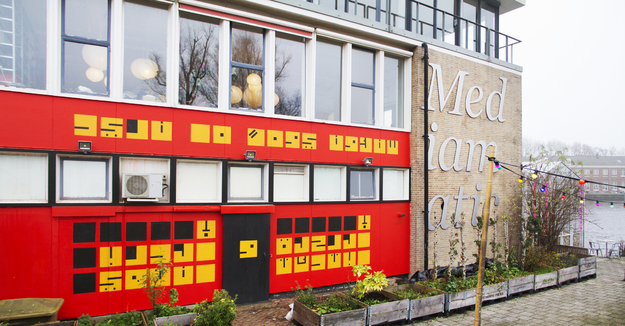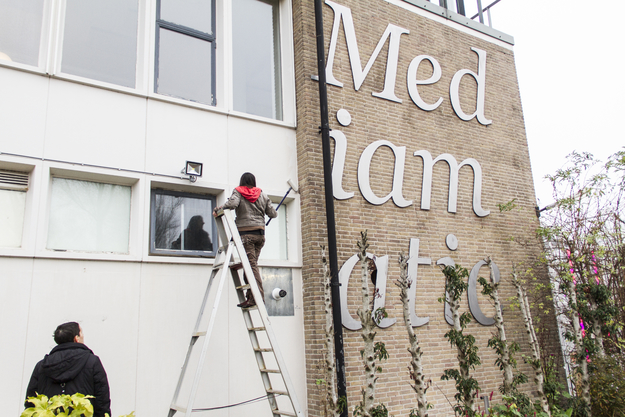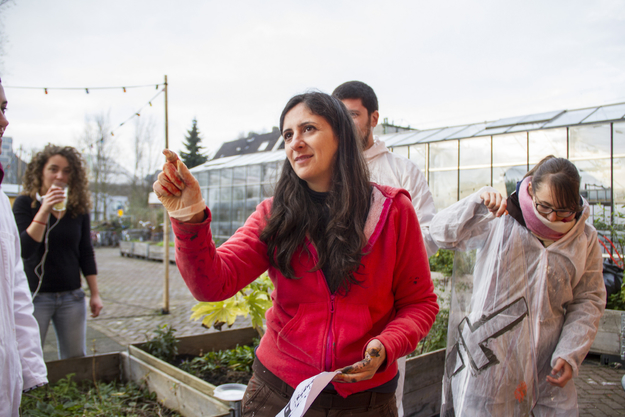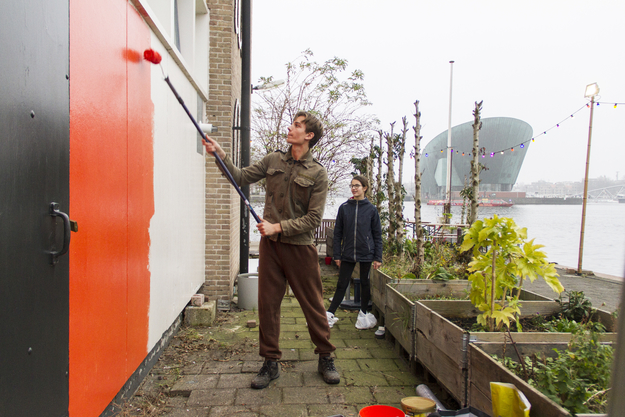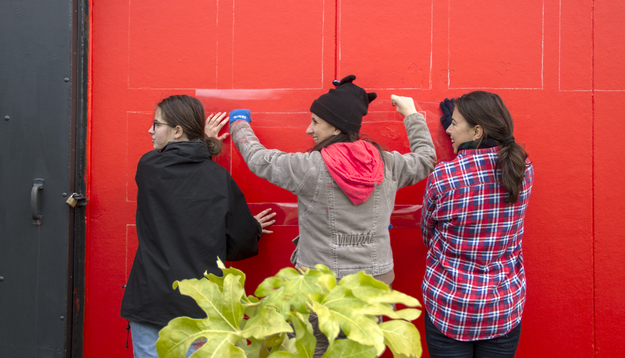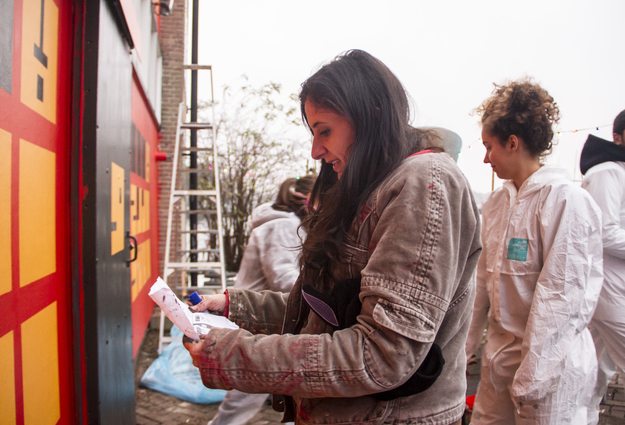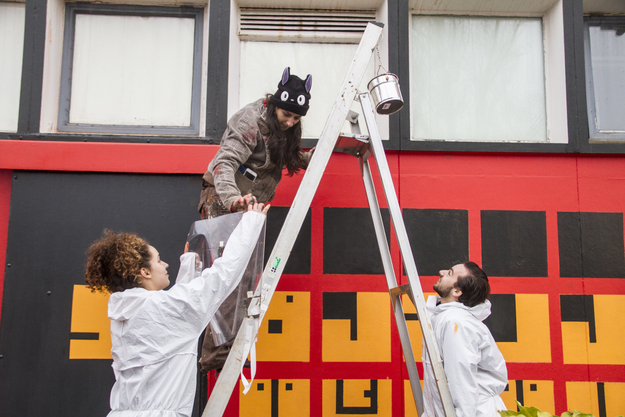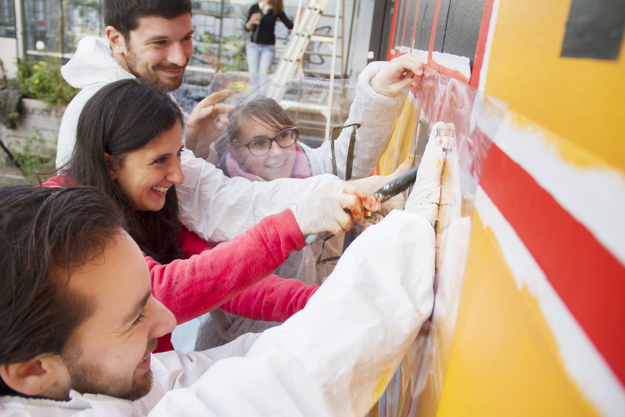Artist and activist
Bahia Shehab became a political activist during the Arabic Spring when she decided to transform her earlier art project "A thousand times NO" about Arabic calligraphy into graffiti in the streets of Cairo. Especially iconic is the "blue bra" which Bahia started spraying after a woman was stripped of her clothes and beaten by the police - exposing the blue bra underneath.
Her work at Mediamatic Biotoop
In order to celebrate the Prins Claus award she received, Bahia created a new mural featuring a poem by Mahmoud Darwish, Palestinian poet and author, which she wrote in an abstract geometric Arab font: "One day we will be what we want to be. The journey has not started and the road has not ended".
Continuing research on Arabic script culture
The artist is continuing her research about historic Arabic calligraphy as a PhD candidate at Leiden University, pursuing to create an encyclopaedia of the Arabic script. She takes an active role now of inspiring our young generation by teaching and mentoring students of the Arts Department at the American University of Cairo. There she developed a design curriculum that focuses on Arabic visual culture and how to maintain this heritage in our modern world, which for example lacks in diversity of especially Arabic digital fonts.
Additionally to demonstrating her work, she shared her research and political activities during an artist talk in our Haeckel Room.
Prins Claus Award
For the past 20 years, the Prince Claus Fund has honoured visionary artists and organisations for their excellent, pioneering work in culture and development. On Thursday 15 December, HRH Prince Constantijn of the Netherlands presented the 2016 Prince Claus Award to graphic designer, artist, educator and historian Bahia Shehab.
Information
Al-Rihla by Bahia Shehab
Open 24/7
Mediamatic Biotoop, Dijkspark 6, Amsterdam
The mural is located at the west wall of Mediamatic Biotoop main building, right next to our harbour and terrace of our restaurant Mediamatic ETEN.
